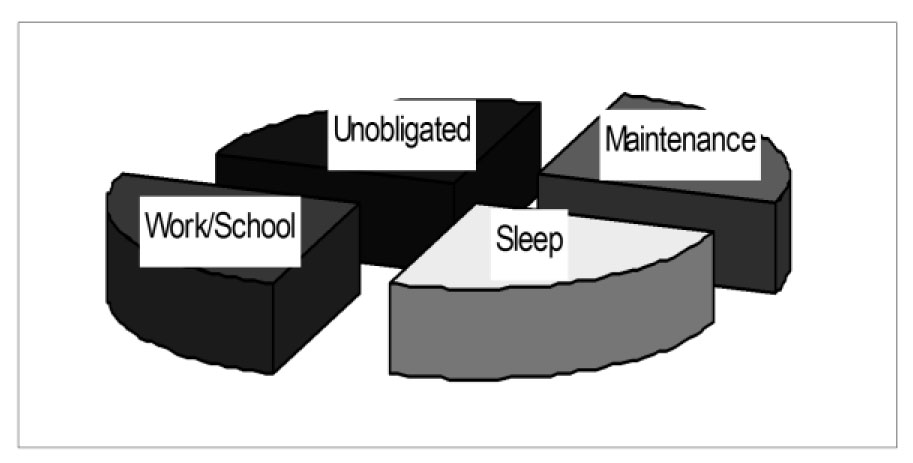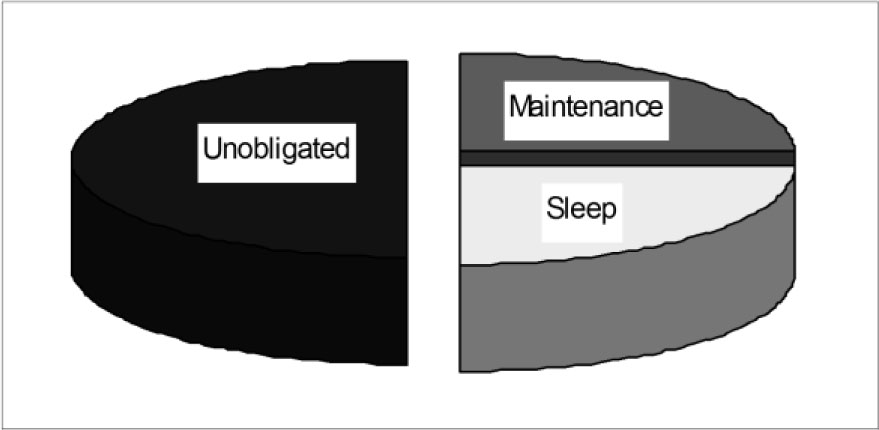Included in this fact sheet is an overview of what transition is and why it is so important.
- What is transition and why is it important?
- Transition Quiz – Questions and Answers
- What is transition planning?
What is Transition and Why Is It Important?
Transition is change. It is passage from one stage to another. We each face many changes or transitions in life, but right now we are specifically talking about the transition from school to whatever is next for your son or daughter with disabilities. Yes – this transition is change…and change is scary and it is hard – for all of us!!
This change from child to young adult is a tough one! Our students are changing and the systems that support them are changing. We may not like it, but it is so and this is a transition that must be anticipated and planned for. If this transition – this change – is to be “seamless” – which means with no interruption in services – we need to remember the lesson learned by Alice in Wonderland and help our sons and daughters decide where they want to go and what they want to do. Then we’ll know how to get them there. We need to consider what will happen…
WHEN THE BUS DOESN’T COME…THAT’S TRAUMATIC!!
Some parents don’t think about what will happen after school until a few months before graduation, and then they realize that “the bus won’t be coming!” That’s traumatic! -OR- they do plan and find that what is available through adult service agencies and in the community may not provide the ongoing assistance needed by our young people. We may find that our young people don’t have choices for a myriad of reasons including not being eligible for services and a lack of funding to provide needed services and options. Options for work, living, or recreation may not exist. Our family member may even choose not to access or participate in programs and services.
Given these factors we might ask, “Why plan a set of coordinated activities to improve post-school outcomes?” To help us decide, let’s consider information that answers these questions:
- What is the quality of the lives of young adults with disabilities after they leave the school system?
- Is the outcome of a productive and satisfying life a reality for students with disabilities leaving public schools?
The answers may surprise some of us with discouraging information.
Studies examining the post-school results of students with disabilities (such as post-secondary education, employment, living arrangements, mobility, and leisure) have found that a large portion of these students do not go on for further training. Additionally, they often do not receive needed post-school supports and services and as adults are not as successful when compared to the general population.
According to various studies and reports, the disturbing truth is that 2/3 of adults with disabilities in our society are NOT working. Reasons for this high unemployment rate include such factors as:
- the nature of the individual’s disability
- the lack of appropriate education and preparation to work
- employer perceptions and attitudes
- lack of social skills
- transportation concerns – e.g. “How does the person get to work?” or “Is accessible transportation available?”
- economic and benefit disincentives – e.g. “They may risk losing SSI and Medicaid benefits if they go to work.”
- family beliefs and concerns – “She’s too disabled to work!” “He can’t do that!” “She doesn’t need to work!”
- lack of appropriate jobs
- lack of devices or aids to help in job performance – e.g. assistive technology, job coaches, etc…
Even with this generally bleak outlook, there is also an increasing awareness that self sufficiency, employment, and independent or semi-independent living can be achieved by individuals with disabilities. In fact, research shows that working makes a big difference in the lives of people with disabilities; it improves their self-esteem and satisfaction with life.
The conflict between the desire and the ability of people with disabilities to work and the factors that inhibit their going to work, creates tension, especially for the families of young adults getting ready to leave school. The transition from school to adult life can be distressing for both young adults with disabilities and their parents. Without careful planning, 12 to 18 or more years of hard work completing school yields only a diploma and a graduate at home with not much to do. School activities no longer occupy 7 or 8 hours each day. The bus doesn’t pull up each morning. Social interaction with other students is no longer a natural part of each day.
To illustrate the difference in how our young people will likely spend their time, let’s look at two charts referred to as the “Pie of Life”.
This is what the slices in the “pie of life” usually look like when students are in school. Each quarter, or “piece of the pie”, represents a quarter of the day, or 6 hours. Consider how much of the time your son or daughter spends doing the following: sleep, school or work, maintenance (chores, hygiene, meals, etc.), and unobligated time.

When students are no longer in school, the slices in the pie of life look more like this pie. Our look at the statistics about the high unemployment rate in adults with disabilities tells us that after struggling to complete 12 to 18 or more years (if they started in preschool) of school, many students graduate and have nothing to do. They have a lot of unobligated time. Without careful planning, your son or daughter with a disability may be at home with this chunk of unobligated time – time wasted and gains made in school quickly lost.

When we look at the laws affecting transition services, addressed earlier in this manual, it is clear that legislators intend for families, students, schools, and adult services agencies to work together to help with the transition to post-school activities. Most government agencies, such as schools and vocational rehabilitation also have specific mandates to work together to streamline the transition process.
The one institution providing services to young adults with disabilities that falls outside of the arena of legislation is the family of a person with disabilities. Families are the most vital caregivers for their family member and are often the advocates and spokespersons. However, the individuals themselves are usually the best spokespersons for themselves, especially when they reach transition age. They – the individuals AND families – need to be involved in all efforts to collaborate and plan for the future.
When students without disabilities graduate, many parents have expectations about the young adult’s path to independence. These expectations can’t be taken for granted for the student with a disability. Specific plans need to be made to ensure a successful transition from school to meaningful employment and activities after school. Why? Because what a young person does after school will be different and the future for him/her won’t necessarily be better unless we do something about it! And we can!
With all of the concerns and problems that we have, people with disabilities are generally better off when they transition from to school to work than they’ve ever been!!
Transition Quiz – True/False
_____ 1. Transition planning has always been part of the IEPs of older students.
_____ 2. According to IDEA, a transition IEP promotes movement from school to work.
_____ 3. A transition plan is based on the needs of the student, not his/her interests and preferences.
_____ 4. Transition planning must begin with the student is 15 years old.
_____ 5. After students with disabilities leave school, they are no longer entitled to additional services.
_____ 6. The issuance of a standard diploma terminates a student’s eligibility for public education services.
_____ 7. As long as the plan addresses the student’s future employment and training needed for the job, it satisfies the intent of the legislation.
_____ 8. The transition plan will specify how different agencies will work together to provide needed services, including when a specific objective needs to be completed and by whom.
_____ 9. If the transition plan is working and goals are being accomplished, the annual review is optional.
_____ 10. When a student reaches age 18, she becomes her “own parent.”
Transition Quiz Answers
- TRUE. The transition plan is part of the IEPs of older students.
- FALSE. According to IDEA, a transition IEP promotes movement from school to work.
- FALSE. A transition plan is based on the needs of the student, not his/her strengths, interests, and preferences.
- TRUE. Transition planning must begin when the student is 15 years old.
- TRUE. After students with disabilities leave school, they are no longer entitled to additional services.
- TRUE. The issuance of a high school diploma terminates a student’s eligibility for public education services.
- FALSE. As long as the plan addresses the student’s future employment and training needed for the job, it satisfies the intent of the legislation.
- FALSE. The transition plan must specify how different agencies will work together to provide needed services, including when a specific objective needs to be completed and by whom.
- FALSE. If the transition plan in the IEP is working and goals are being accomplished, the annual review is optional.
- TRUE. When a student reaches age 18, she becomes her “own parent”.
What is Transition Planning?
When the Individuals with Disabilities Education Improvement Act (IDEA 2004) was reauthorized in 2004, it continued to recognize the need and includes the federal mandate for transition services. It clearly intended that those services be an integral part of the Individualized Education Program (IEP). Transition planning is designed to assist students with disabilities as they move from school into the adult world.
Because the Individualized Education Program (IEP) is so important in identifying a student’s needs and making plans to meet them, the Utah Parent Center has developed a workshop and an information booklet and video, “Parents as Partners in the IEP Process.”
This excellent resource can help guide parents through the provisions of the Individuals with Disabilities Education Act (IDEA 2004) and provide information to help them in the process of developing their student’s IEP, including transition plans.
When the law was reauthorized in 2004, it specified that “for a student with a disability beginning not later than the first IEP to be in effect when the student turns 16 (such as in an IEP meeting conducted when the student is 15 years old), or younger if determined appropriate by the IEP team, the notice of meeting must indicate: that a purpose of the meeting will be the consideration of the post-secondary goals and transition services for the student; and that the LEA will invite the student; and any other agency that will be invited, with the consent of the parents or student age 18 or older, to send a representative. All of the IEP rules apply, but transition IEPs have additional requirements.
Transition services are to include linkages to services and programs in the community. The law also requires that the transition IEP must be reviewed annually to assure that the long-range goals are accompanied by specific objectives and activities which successfully focus on strengths, and abilities rather than just educational processes and meet graduation requirements.
Transition planning prior to age 16 may be especially important for students who expect to graduate with peers of their same age or who are at risk of dropping out. Early identification of concerns and proactive appropriate planning are essential to keep students on a successful track to complete their school experiences.
Parents of a student receiving accommodations under Section 504 of the Rehabilitation Act can address transition issues when developing his Student Educational Occupation Plan (SEOP) and 504 Plan. The Booklet, “A Parent and Educator’s Guide to Section 504 of the Rehabilitation Act” can be obtained from the Utah Parent Center or the Utah State Office of Education at no cost to parents.
The components of a transition IEP according to IDEA must be based on the student’s needs and take into account his interests and preferences. Also, it must be designed to promote movement from school to work. It identifies a coordinated set of services which include his goals for post-school activities, objectives, timelines, and assigned responsibilities. It incorporates input from his teachers, special education administrators, and other representatives of agencies and/or organizations likely to provide or pay for services.
The goal of transition services is to maximize the self-sufficiency, employment, independent living, and positive community involvement of individuals with disabilities. These services will provide your son with opportunities to develop his skills and use his abilities so he can have more choices and satisfaction in life. Also, his active participation in society will enhance the quality of life for others – especially his family and friends.
Essential to the Transition IEP:
- Includes a statement of transition service needs to be in place by age 16, or younger, if appropriate,
- Beginning at 16, or younger, if appropriate, states what services are needed and identifies interagency responsibilities,
- Is based on student’s needs,
- Considers student’s interests and preferences,
- Focuses on strengths and abilities rather than educational processes,
- Promotes movement from school to post-school activities,
- Is reviewed at least annually, and
- Consideration of social needs.
This content is taken from the Utah Parent Center handbook:
From NO Where to KNOW Where: A Parent Handbook for the Transition to Adult Life.

